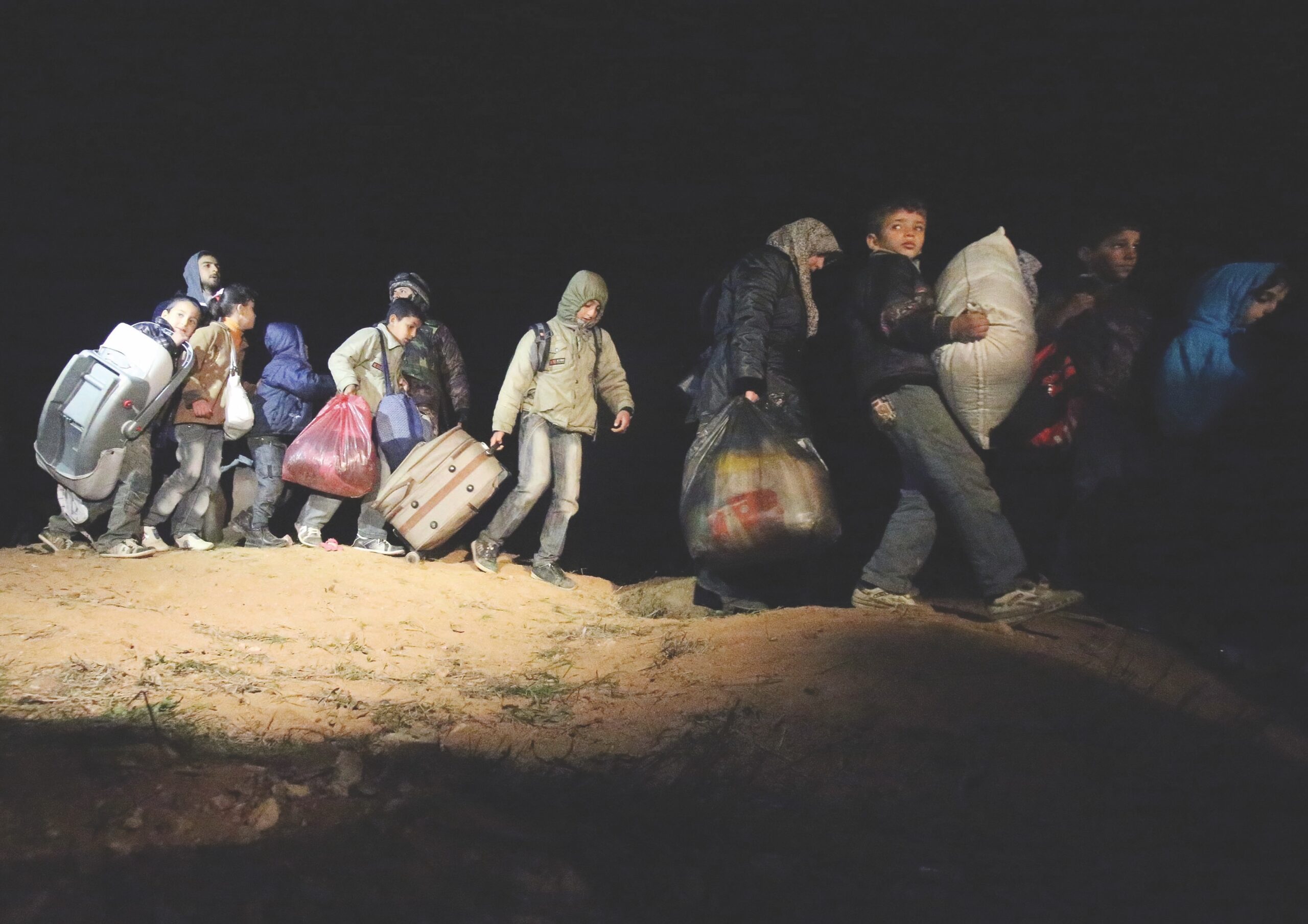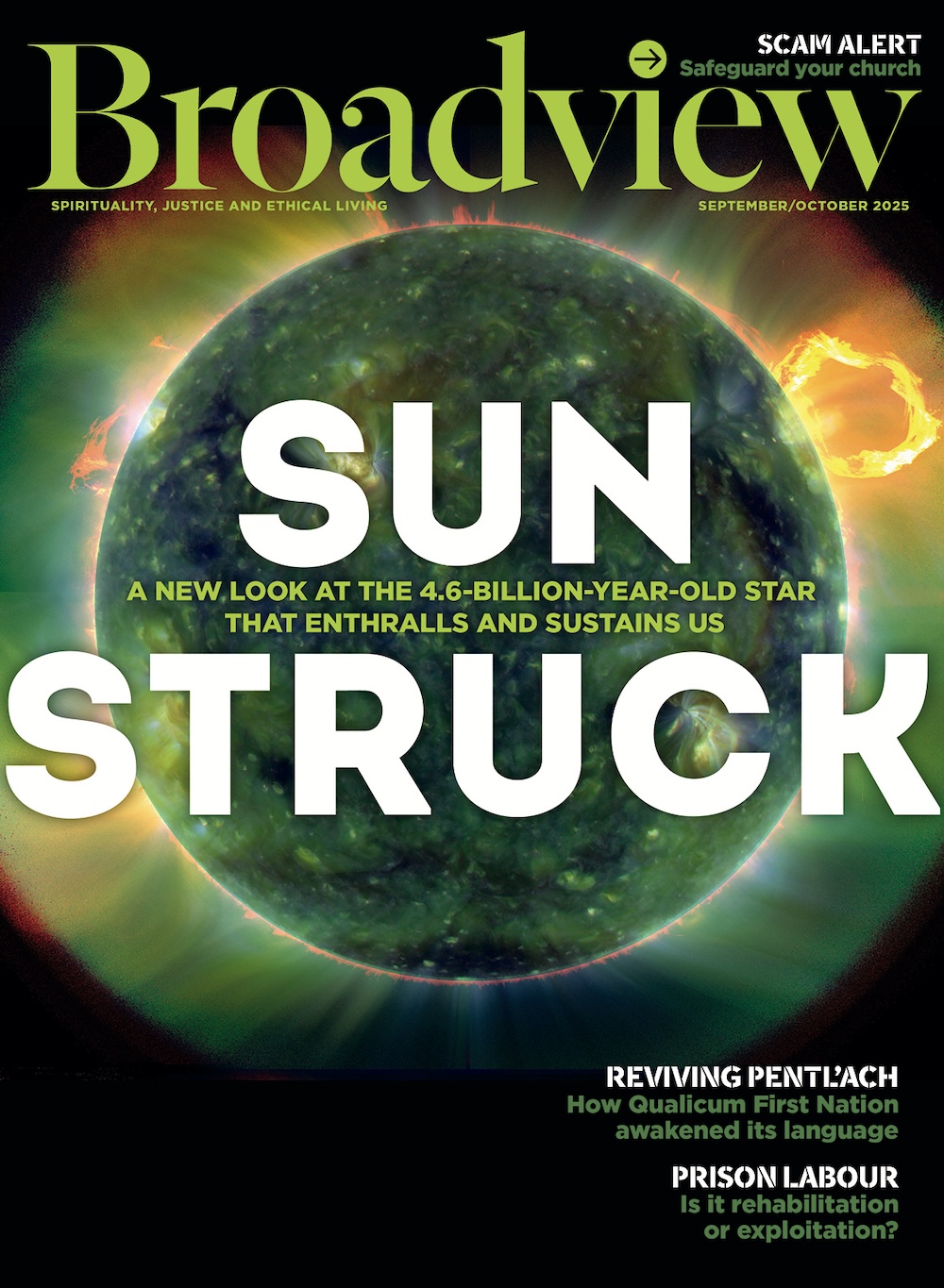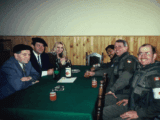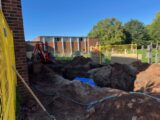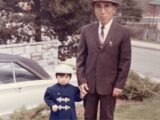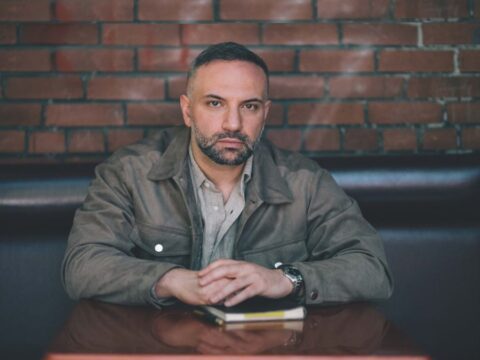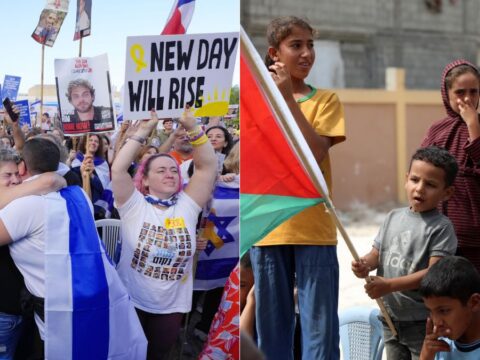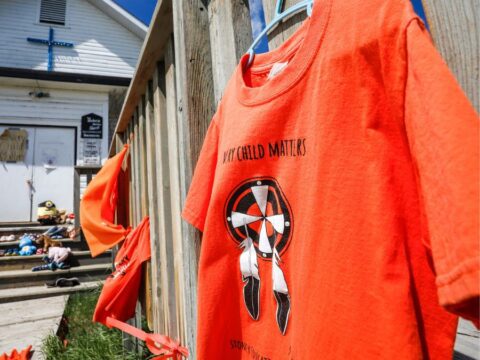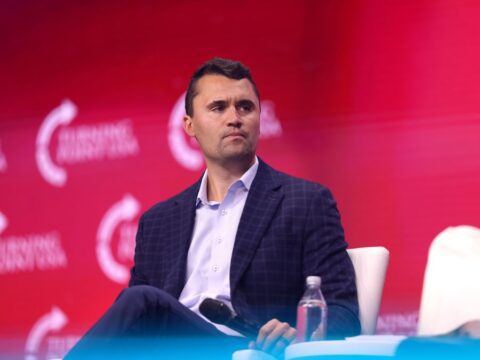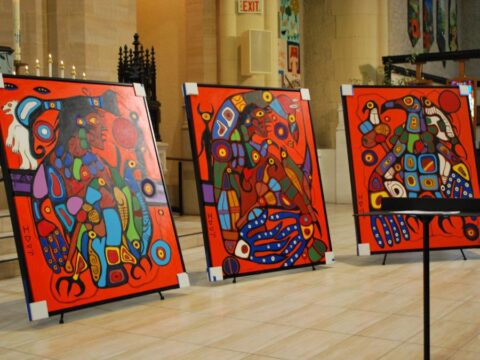Marfat Ibrahim laughs as she lifts the rugs covering the concrete floor in her tent. “Look, look,” she says, pointing with one hand and juggling her one-year-old daughter in the other arm. “It’s all water underneath. Everything is wet. This is what we had to sleep on last night.”
Ibrahim, 31, laughs again, but I catch a tinge of bitterness in her voice. It had rained heavily the night before. The downpour leaked through their canvas roof, soaking all the cushions and blankets. The family of 10 had to sleep sitting up.
You may unsubscribe from any of our newsletters at any time.
“I don’t know whether to laugh or cry. I don’t want the children to know that I’m sad, because when they see me crying, they cry too. I cry a lot after they have gone to sleep,” says Ibrahim.
This is no weekend camping trip gone sour. These are the rigours of daily life for hundreds of thousands of Syrian refugees living in Lebanon and elsewhere. Standing barefoot in the mud outside her tent in the Bekaa Valley, Ibrahim agrees to share how she and her family ended up here, less than 20 metres from an open ditch that collects sewage from an outhouse shared with two other families.
I met the Ibrahims when I travelled to Lebanon and Jordan this spring to document the lives of refugees fleeing the raging civil war in Syria. The protracted conflict, now in its fourth year, has cost more than 190,000 lives and displaced over nine million people (6.5 million within the country, and nearly three million to neighbouring states). According to the United Nations, Syrians are now the world’s largest refugee population in the fastest-growing exodus since the 1994 Rwandan genocide.
To date, The United Church of Canada has raised nearly $230,000 to help supply these refugees with shelter, clothing, food, health care and education for the children. To find out what United Church-funded humanitarian organizations are doing to assist Syrians, I reached out to the church’s partners on the ground: non-governmental organizations including the Lutheran World Federation, the Department of Service to Palestinian Refugees and the International Orthodox Christian Charities. It was the IOCC, which has been working to combat malnutrition among Syrian refugees, that led me to the Ibrahim family and their muddy, remote settlement.
Marfat Ibrahim tells me she had a good life in Aleppo province, where she and her husband, a construction worker, owned a home. Their village came under attack in November 2013 as rebel forces and government troops fought to control key supply routes and industrial areas. The family home was destroyed by airstrikes, and Ibrahim’s brother, the only one home at the time, was killed. Nothing could be salvaged from the house, and Ibrahim, her husband and their eight children embarked on a 24-hour bus ride south to Lebanon with only the clothes on their backs.
Relatives who’d left Syria earlier introduced them to a Lebanese landowner who’d turned his undeveloped, muddy field into a makeshift refugee camp by renting 40 slabs of concrete and tents to Syrians for US$500 a year.
At first, the Ibrahims borrowed food from their relatives. There wasn’t enough to go around, and the baby, Shurooq, started losing weight and developed bladder stones, which may require surgery. The family is now registered as UN refugees and receives about $300 a month from the agency. They say it is not enough to cover their basic costs.
“I worry a lot. All my other children were healthy,” says Ibrahim, as baby Shurooq lets out a hoarse cough.
With thousands of refugees crossing the border daily since the war started in March 2011, hospitals and health clinics in Lebanon have seen a dramatic increase in the number of patients, with ailments related to poor nutrition and unclean water. Anemia, gastroenteritis, diarrhea, lack of appetite and breast-feeding problems abound.
But until recently, very few medical staff in Lebanon knew how to recognize or treat malnutrition. “Nutrition is a small chapter in [their] medical textbooks. It’s like something that happens in Africa,” says Linda Berbari, a nutritionist for the IOCC. “We have 800 PHCs [primary health-care centres] throughout Lebanon, but I can assure you none of them know how to treat malnutrition.”
Dr. Darvesh Khan has been a physician and director of a primary health-care centre in Bekaa for 18 years. His clinic saw 480 patients in January 2013 — a number that more than doubled to 1,240 by last November. Among them, 170 children were diagnosed with malnutrition.
Khan affirms Berbari’s criticism, saying many of his colleagues don’t know to look for symptoms such as swelling, dull yellow skin and small arm circumference. “Doctors may have learned about malnutrition in university, but they don’t update their knowledge or they forget the concepts if they don’t use them.”
The common — and incorrect — remedy prescribed by many Lebanese doctors encountering an underweight child is to just feed the child more. But a malnourished child needs a special diet to slowly introduce a variety of foods and increase portion sizes, says Khan.
Last year, Khan himself was among the doctors who didn’t know how to diagnose malnutrition. He benefited from training provided by the IOCC, which gathered a team of lactation consultants and nutrition experts to educate over 500 health-care workers across Lebanon. The IOCC also works with other non-governmental organizations to stop the widespread distribution of free formula, which can deter mothers from breastfeeding their infants.
In addition, recognizing that clinics were overwhelmed with patients, the IOCC trained about 50 volunteers to work as support staff at 30 health-care centres across the country. The IOCC has received approximately $25,800 from The United Church of Canada for their operations in Lebanon, Jordan and Syria.
Last February, Marfat Ibrahim brought Shurooq to Khan’s clinic in Bekaa, where the little girl was diagnosed with acute malnutrition. Medical staff gave her nutrient-enriched nut paste and a schedule of regular checkups. Over the course of 15 visits, Shurooq’s weight rose to 10 pounds from six. Last March, a few days shy of her first birthday, she finally began crawling.
Lebanon has opened its borders to more than a million Syrians. That’s in addition to the 450,000 Palestinian refugees and tens of thousands of Iraqis it was already hosting. But the government has been unable to provide for the refugee population, and local residents have been less than welcoming.
Everywhere I go, I hear from Lebanese people resentful of the sudden and massive drain refugees impose on the country’s infrastructure. “They are stealing our jobs” is an oft-repeated complaint in the geographically small country of approximately 4.5 million people, not including refugees, with an unemployment rate of about 10 percent.
A recent survey from the American University of Beirut showed that 90 percent of Lebanese support curfews — already imposed in some municipalities — and other measures restricting Syrians’ movements. Even Lebanon’s Foreign Minister Gebran Bassil has called for the deportation of Syrian refugees, saying their presence threatens the country’s current demography.
My travels take me on a bus ride to Sidon in southern Lebanon, where a high school for Syrians was opened in April 2013 with $170,000 from The United Church of Canada, funnelled through the Joint Christian Committee (JCC), a branch of the Department of Service to Palestinian Refugees.
The school’s program manager, Mahmoud Manlah, meets me at Sidon’s intercity bus station. During the five-minute walk to the school, he explains that 90 percent of the students and teachers are actually Syrians of Palestinian origin — twice displaced by wars past and present. Many came to Lebanon from the Yarmouk Palestinian refugee camp in Damascus, Syria. We walk up to Manlah’s office on the second floor of a three-storey building. All of the classrooms are on this floor. Students are on a break between classes, and many seem eager to meet the Canadian visitor at their school.
A studious-looking and confident young woman plops herself next to me and introduces herself. Aya Banna, 18, tells me she loves school and wants to be an English teacher. She had arrived in Lebanon with her mother in February 2012 after their home in Hama, Syria, was destroyed in the war. In many ways, she is a product of regional migration. Her mother is Lebanese, her father Palestinian, but Banna was raised in Syria and considers herself Syrian. Before enrolling in the JCC school, Banna had attended a Lebanese school for a year where she faced discrimination. “I wanted to play football [soccer] with the school team, but the other girls wouldn’t let me join and told me to go play with the Syrians,” she says, adding that there was no Syrian soccer team at the school.
When the JCC received funding from the United Church, administrators wasted little time in setting up the Syrian high school. Many students had already lost a year or more of schooling, and the Lebanese system is especially challenging for older teenagers, says JCC director Sylvia Haddad.
“The Lebanese curriculum is taught in French or English, while the Syrian schools are all in Arabic,” she explains, adding that only eight out of 600 Syrians in Lebanon passed their final high school exams in 2012. “It was very difficult for the older students to learn physics or math in a new language. They couldn’t cope.”
Ali al Hagi, 17, is one of those students who struggled with the language barrier. He too attended a Lebanese school when he first came south from Idlib, Syria, but he lasted only two months. He had been spending three hours at the end of each school day translating his textbooks using Google before buckling down to study. Ali heard about the JCC school from a friend and has been faring much better since he transferred over. He says it is also easier to make friends here surrounded by other Syrians who share a similar history.
The school started out with 25 students. When all of them passed their final exam in the first year, the school’s reputation spread. It now has 240 students taught by 16 teachers. The school has only enough funds to focus on academics. So while Banna may not be able to play soccer here, she says it’s a place where she feels accepted and welcome.
Following the trail of the United Church funds puts me on a plane to Jordan next, where an estimated 600,000 Syrian refugees are living. Over 80 percent of them live outside the formal camps established by the government and the UN Refugee Agency. Paying rent is a major struggle, and so the Lutheran World Federation (which has received about $22,000 from the United Church) helps refugees upgrade their shelters, fix leaky ceilings and install plumbing. It also provides blankets and shelving units.
But there is something else the Lutheran World Federation does that is equally important for both refugees and the communities hosting them: it alleviates the tension that arises between locals and newcomers. According to an April 2014 report from the International Labour Organization, Syrian refugees began arriving in Jordan during an economically tumultuous time. Labour protests were increasing in the resource-poor country, with impoverished citizens demanding higher wages. As in Lebanon, the new arrivals to Jordan are perceived to be driving profits and wages downward.
To ease strained relations, the Lutheran World Federation organizes peace-building programs and retreats with workshops on empathy, conflict mitigation and non-violent communication. Heather Patterson, a program officer for the Lutheran World Federation in Amman, Jordan’s capital, says the organization also relieves pressure on host communities by providing infrastructure such as new classrooms and additional washrooms in schools.
And it encourages both Syrians and Jordanians to participate in local community projects like organizing school plays and delivering gifts to hospital patients. “The whole point is to get Syrian and Jordanian communities to integrate peacefully, foster familiarity, form camaraderie and get people engaged in conversation in a safe space,” says Patterson.
Despite the best efforts of aid organizations and local governments, however, the reality is that both Lebanon and Jordan are stretched beyond their limits. Even now, the violence in Syria continues to expand beyond the country’s borders, threatening peace and security throughout the region. Sectarian and religious conflict is intensifying.
Western powers have been reluctant to take active measures to end the bloodshed in Syria — and perhaps rightly so. However, Canadians cannot ignore the squalor that millions of innocent civilians are forced to endure as they wait for an end to a war they did not choose.
Lebanon, Jordan and other Arab nations simply do not have the resources to accept millions more migrants in a few short years. Ignoring the current refugee crisis in the Middle East would be inhumane, and developed countries, including Canada, can and must do more to assist refugee-hosting countries. For the millions of refugees themselves, survivors like Marfat Ibrahim who’ve lost their homes and loved ones, the greatest need is simply to find a safe place where their families can live and thrive.
Vidya Kauri is a journalist based in Toronto.
***
This story first appeared in The United Church Observer’s October 2014 issue with the title “Exodus.”

